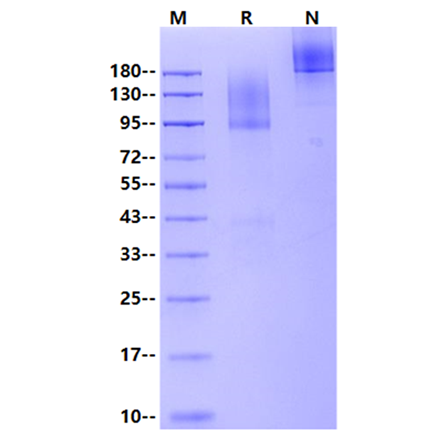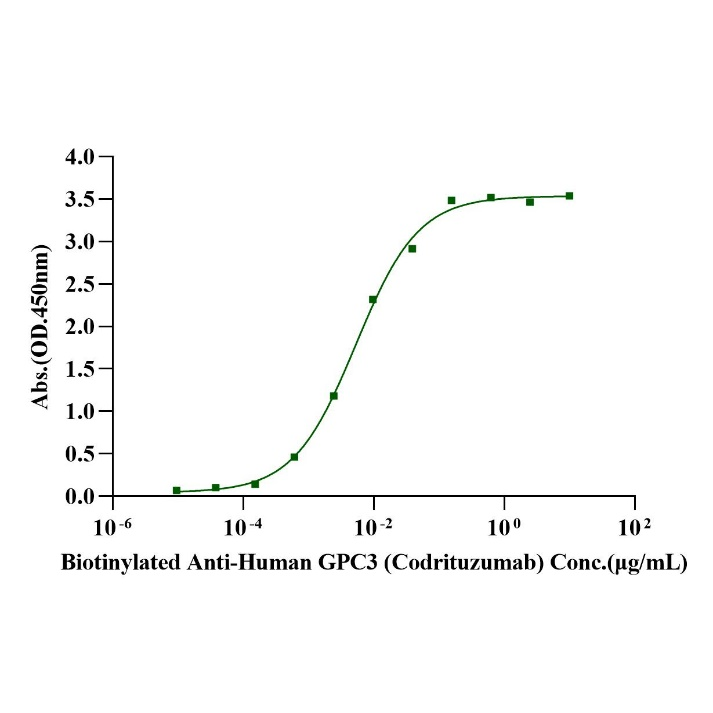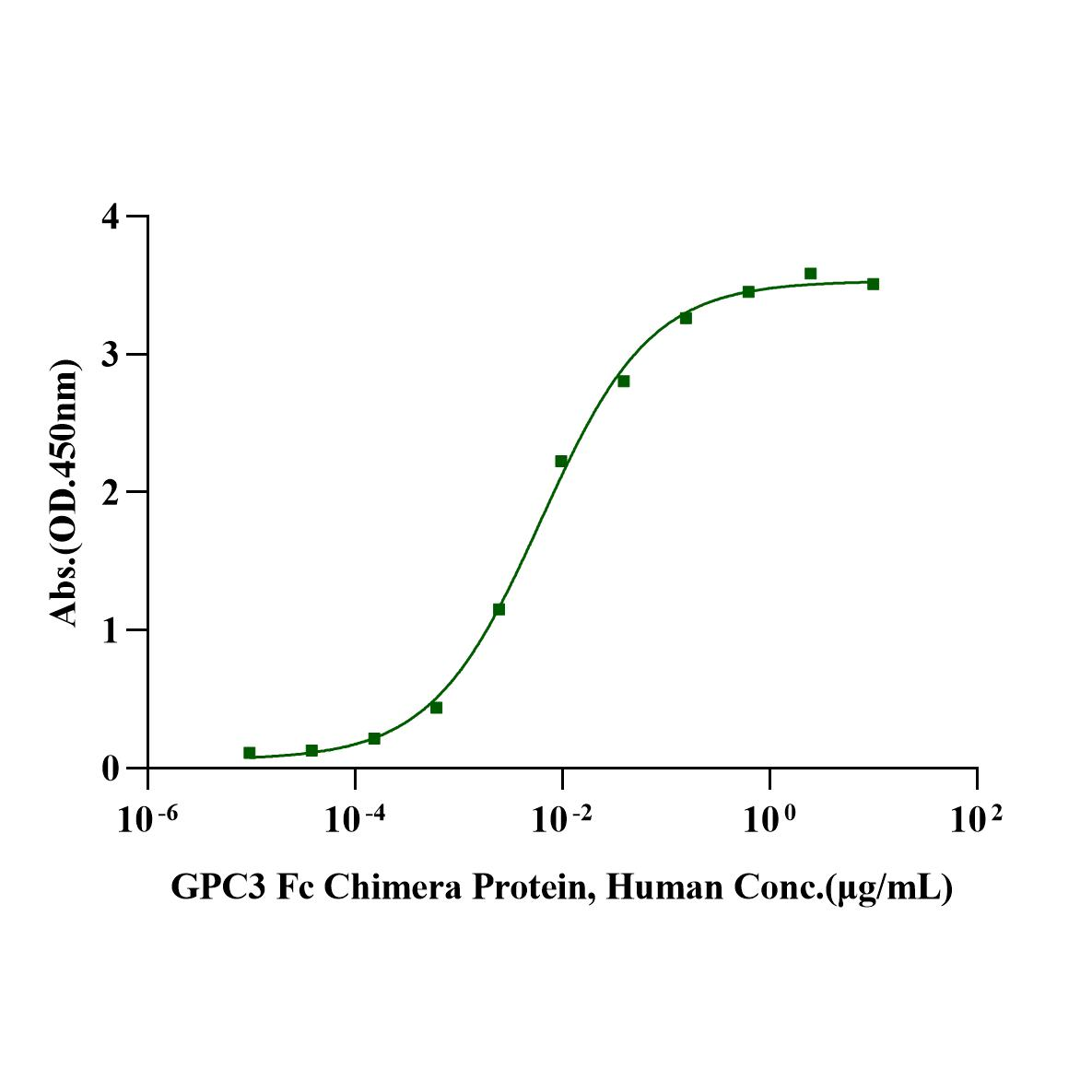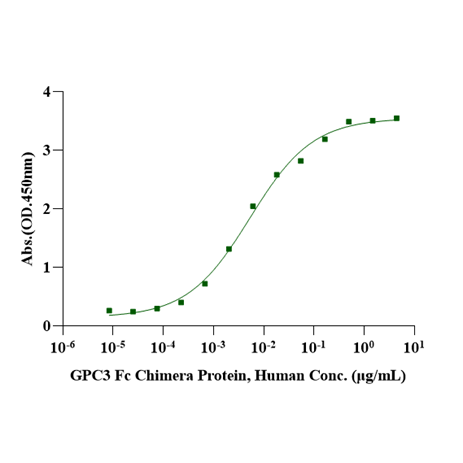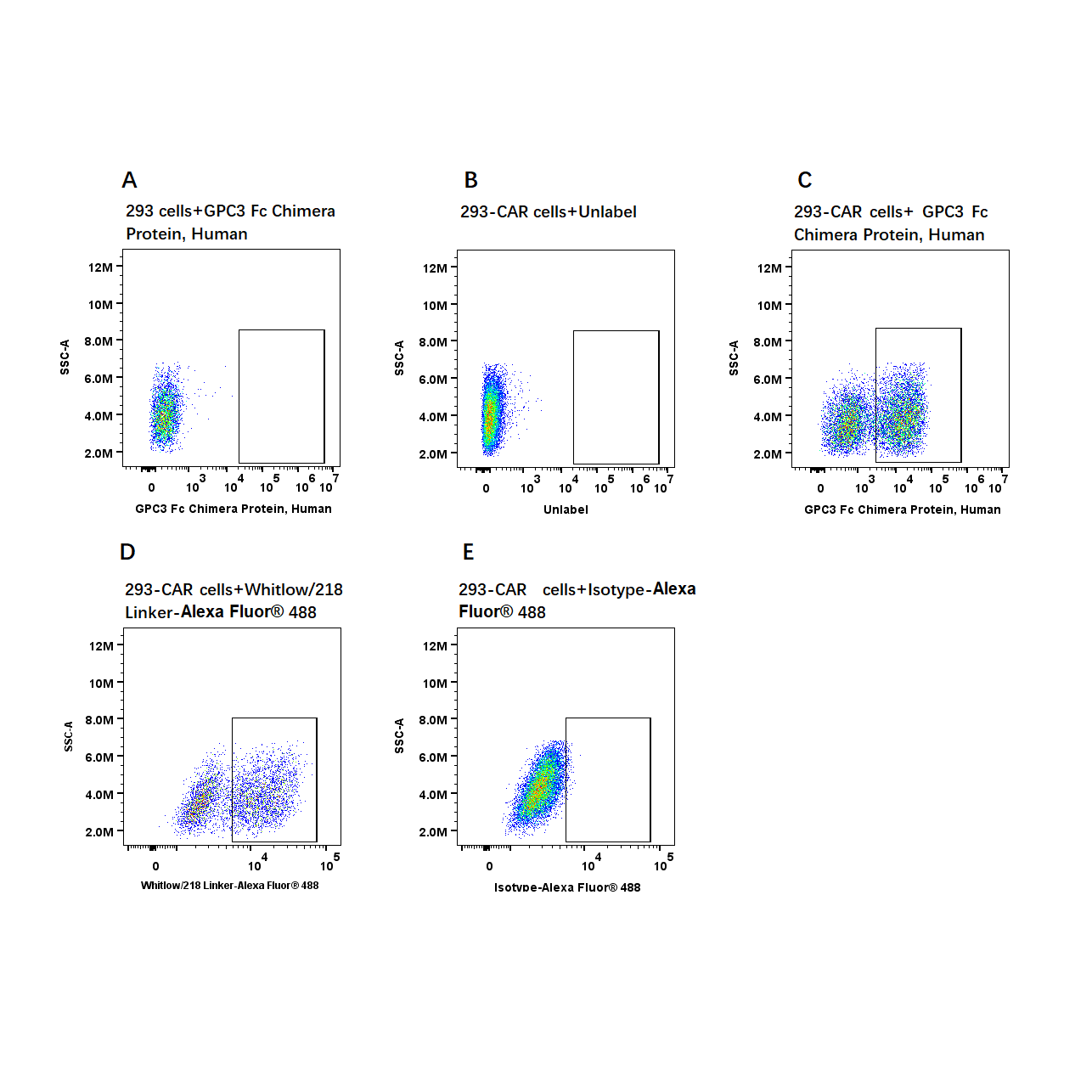2e5 of transient transfected anti-GPC3 ScFv CAR-293 cells were stained with 0.01ug GPC3 Fc Chimera Protein, Human, (Cat. No. UA010680) and unlable respectively (Fig. C and B), and non-transfected 293 cells were used as a control (Fig. A). Alexa Fluor 647 signal was used to evaluate the binding activity. 2e5 of transient transfected anti- GPC3 ScFv CAR-293 cells were stained with isotype and Whitlow/218 Linker-Alexa Fluor® 488 (Fig. D and E). Alexa Fluor® 488 signal was used to evaluate the binding activity.
Product Details
Product Details
Product Specification
| Species | Human |
| Synonyms | Glypican-3 |
| Accession | P51654-1 |
| Amino Acid Sequence | Gln25-His559, with C-terminal Human IgG1 Fc |
| Expression System | HEK293 |
| Molecular Weight | 95-180kDa (Reducing) |
| Purity | >95% by SDS-PAGE |
| Endotoxin | <0.1EU/μg |
| Conjugation | Unconjugated |
| Tag | Human Fc Tag |
| Physical Appearance | Lyophilized Powder |
| Storage Buffer | PBS, pH7.4. |
| Reconstitution | Reconstitute at 0.1-1 mg/ml according to the size in ultrapure water after rapid centrifugation. |
| Stability & Storage |
· 12 months from date of receipt, lyophilized powder stored at -20 to -80℃. · 3 months, -20 to -80℃ under sterile conditions after reconstitution. · 1 week, 2 to 8℃ under sterile conditions after reconstitution. · Please avoid repeated freeze-thaw cycles. |
| Reference | 1.nature
modern pathology original article article Published: 09 May 2008.
Sarit
Aviel-Ronen, Suzanne K Lau, Melania Pintilie, Davina Lau, Ni Liu, Ming Sound
Tsao & Serge Jothy Modern Pathology volume 21, pages817–825 (2008)Cite
this article. |
Background
Glypican-3
(GPC3) belongs to a six-member family of membrane-bound heparan sulfate
proteoglycans with a gene that is localized to Xq26.2. GPC3 belongs to a
family of cell-surface heparan sulfate proteoglycans and is highly expressed
during embryogenesis and organ development. GPC3 has limited expression in
adult tissues, including lung, ovaries, mammary epithelium, and mesothelium.
Normally, the liver does not express detectable levels of GPC3, but it has
been observed to be highly upregulated in hepatocellular carcinomas and
hepatoblastomas. Glypican-3 has been shown to play a role in the control of
cell growth through the induction of apoptosis. Mutations in glypican-3
result in cell overgrowth. Among all mammalian glypicans, only mutation of
GPC3 is associated with a phenotype in humans. GPC3 spans more than 500 kb of
genomic DNA and contains 8 exons. Loss-of-function mutations in GPC3 result
in overgrowth of many organs (Simpson-Golabi-Behmel syndrome), including the
liver, which has been confirmed using GPC3-deficient mice. This observation
suggests that GPC3 plays a role in growth suppression and organ size control.
GPC3 is highly expressed in yolk sac tumors and choriocarcinomas, with a
cytoplasmic staining pattern. It is only variably expressed in teratomas and
is absent in germinomas and embryonic carcinomas.
Picture
Picture
FC
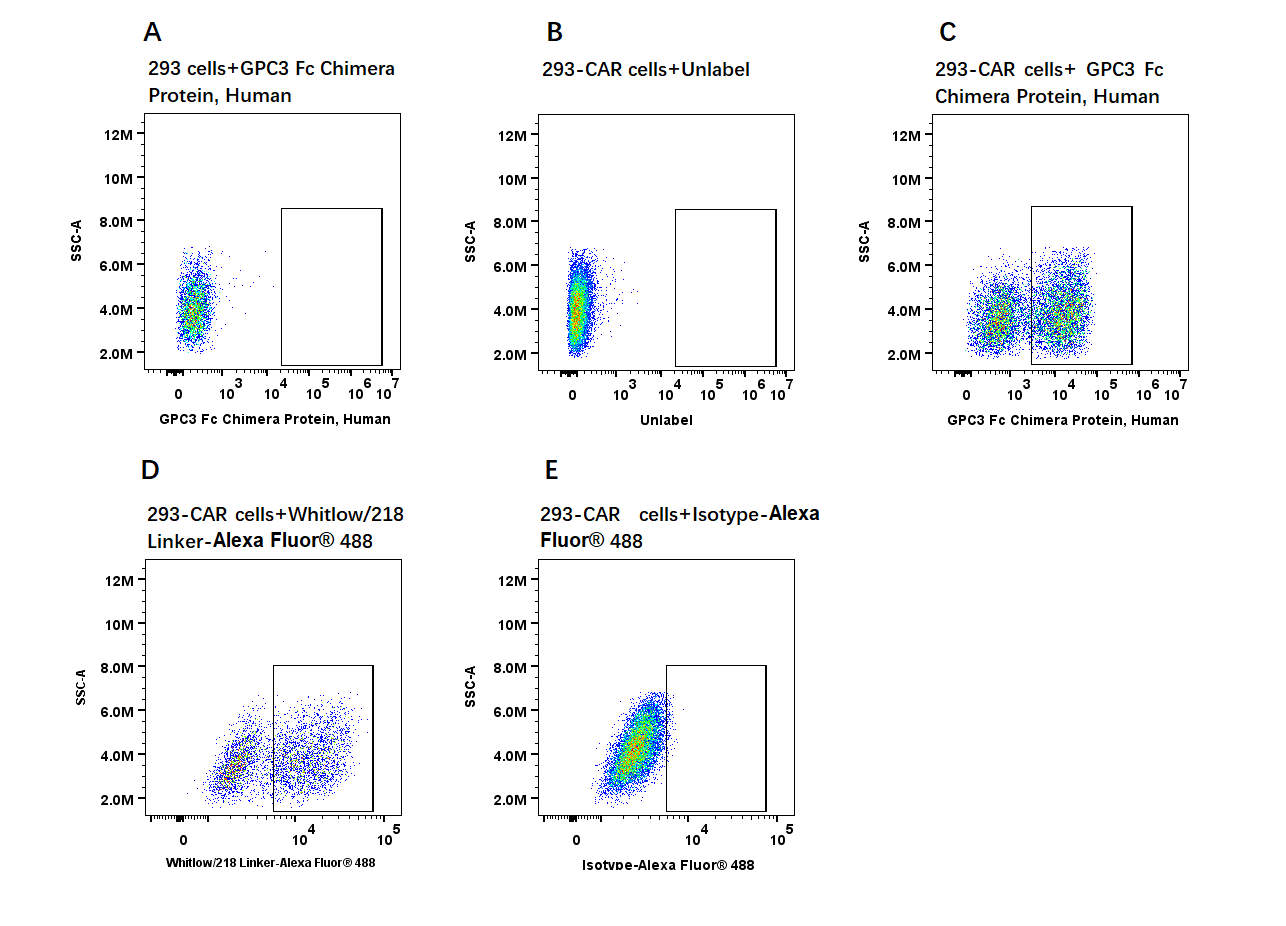
SDS-PAGE
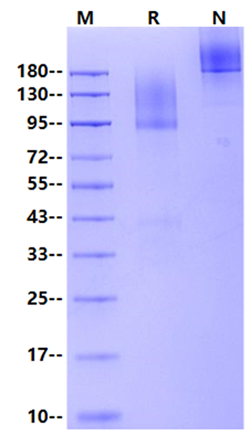
1μg (R: reducing condition, N: non-reducing condition).
ELISA
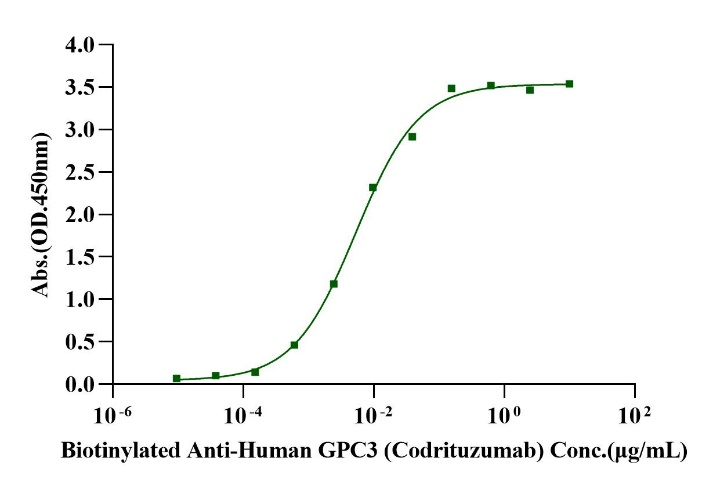
Immobilized GPC3 Fc Chimera, Human (Cat. No. UA010680) at 2.0μg/mL (100μL/well) can bind Biotinylated Anti-Human GPC3 (Codrituzumab) with EC50 of 4.39-6.54ng/mL.
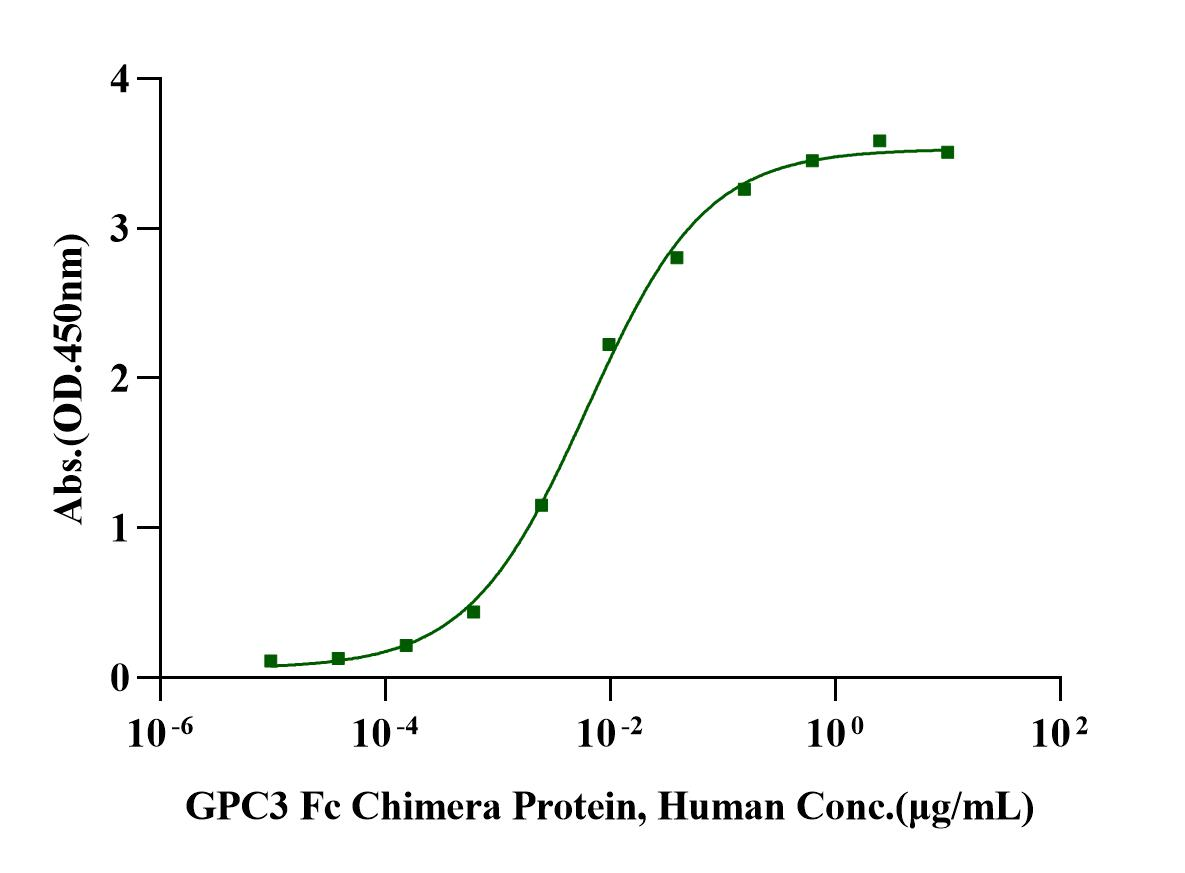
Immobilized FGF-basic(146aa) Protein, Human (Cat. No. UA040145) at 2.0μg/mL (100μL/well) can bind GPC3 Fc Chimera Protein, Human (Cat. No. UA010680) with EC50 of 4.99-7.73 ng/ mL.
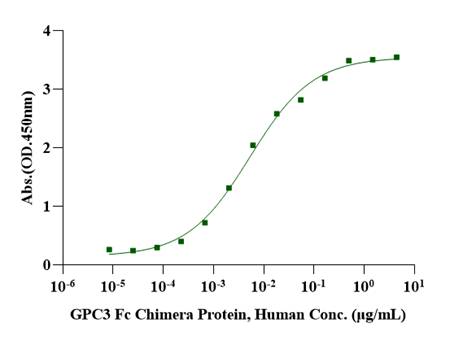
Immobilized FGF-basic(154aa) Protein, Human (Cat. No. UA040007) at 2.0μg/mL (100μL/well) can bind GPC3 Fc Chimera Protein, Human (Cat. No. UA010680) with EC50 of 3.97-7.23ng/mL.
